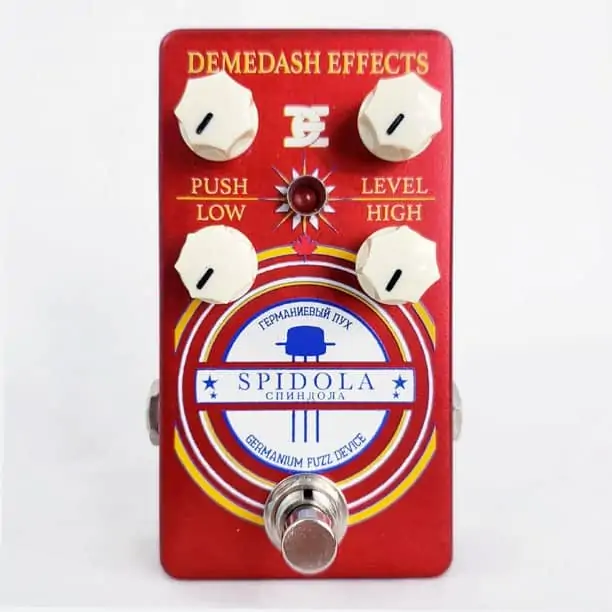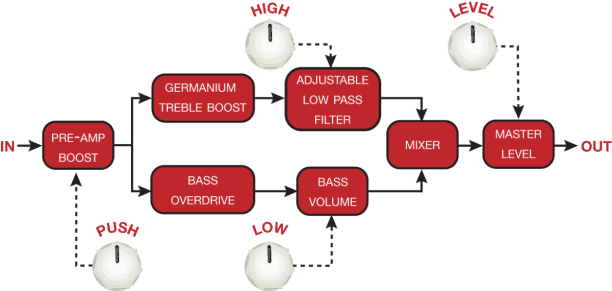
Winnipeg, Manitoba’s Demedash Effects got us used to original pedal circuits that defy tradition, and the company’s first fuzz pedal keeps faith to this approach, with more subtlety than their other designs.
The company’s new Spidola Fuzz uses the same Germanium transistors found in the vintage fuzzes of the ’70s, but the unique feature of this pedal consists of splitting the signal in a lower and upper frequency after the first gain stage, so that the lower-end side of your tone gets an extra, separate drive stage (through the Low knob) and gets then reintegrated in the mix, adding mud-less thickness that can be controlled independently from the fuzz’s mids and highs.
Here’s a graph explaining the signal flow and the function of each knob:

Keeping the Low knob down can produce tones reminiscent of the vintage treble boosters (think Range Master), while turning it up to halfway or more will produce a meaty fuzz sound.
If you are wondering how the Demedash Effects Spidola sounds, here are the video demos of it for you:
The Spidola Germanium Fuzz is not only designed to create the sounds that riff-heavy rockers from the 1970s squeezed out of their gear by running Germanium Treble boosters into overloaded amps, it uses germanium transistors from that very era to get it done.
Sympathetic to the fact that you may not have a full speaker stack to make up the bottom end of your playing, the Spidola overdrives your bass and mixes it back in with the treble boosted fuzz, giving you a glorious, thick sound that can sear through a mix without muddying up notes and easily clean up by rolling back your guitar’s volume knob.






















